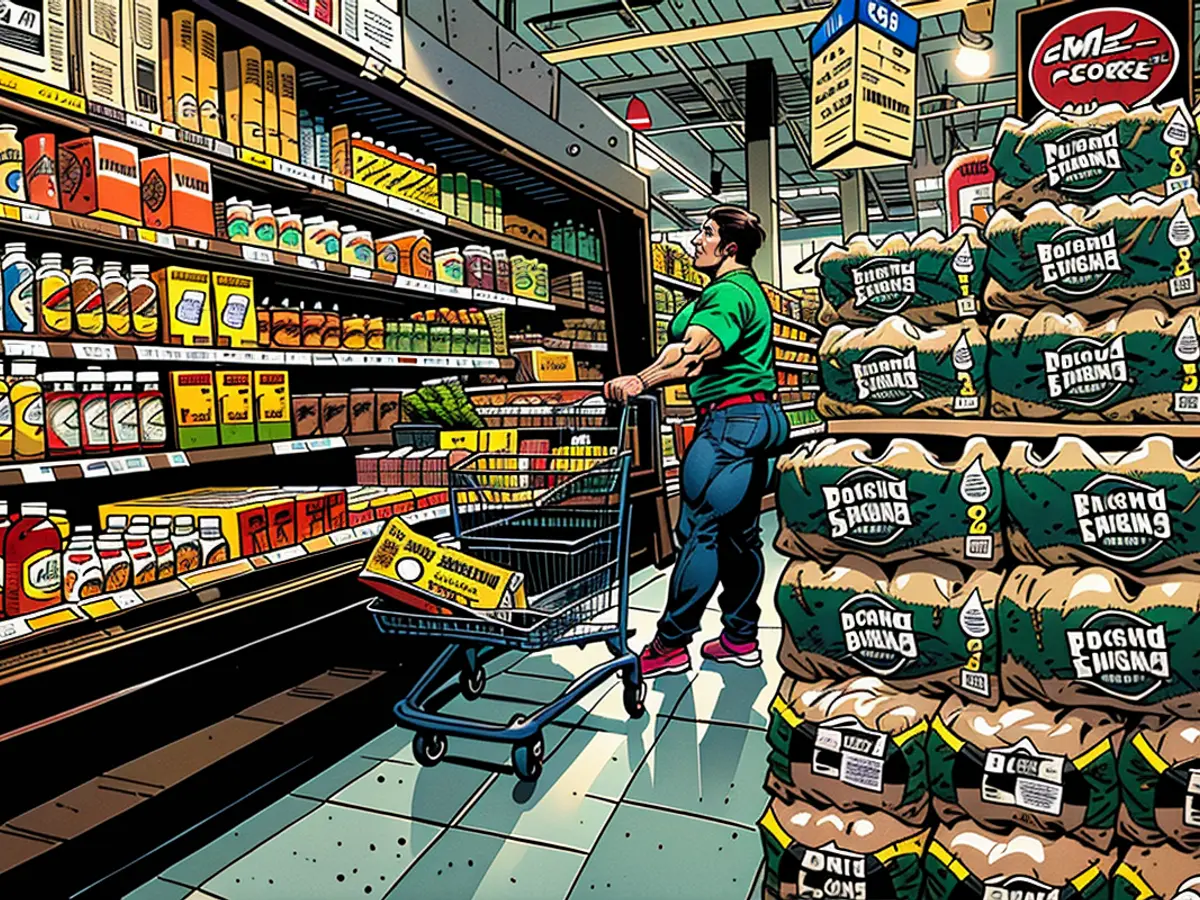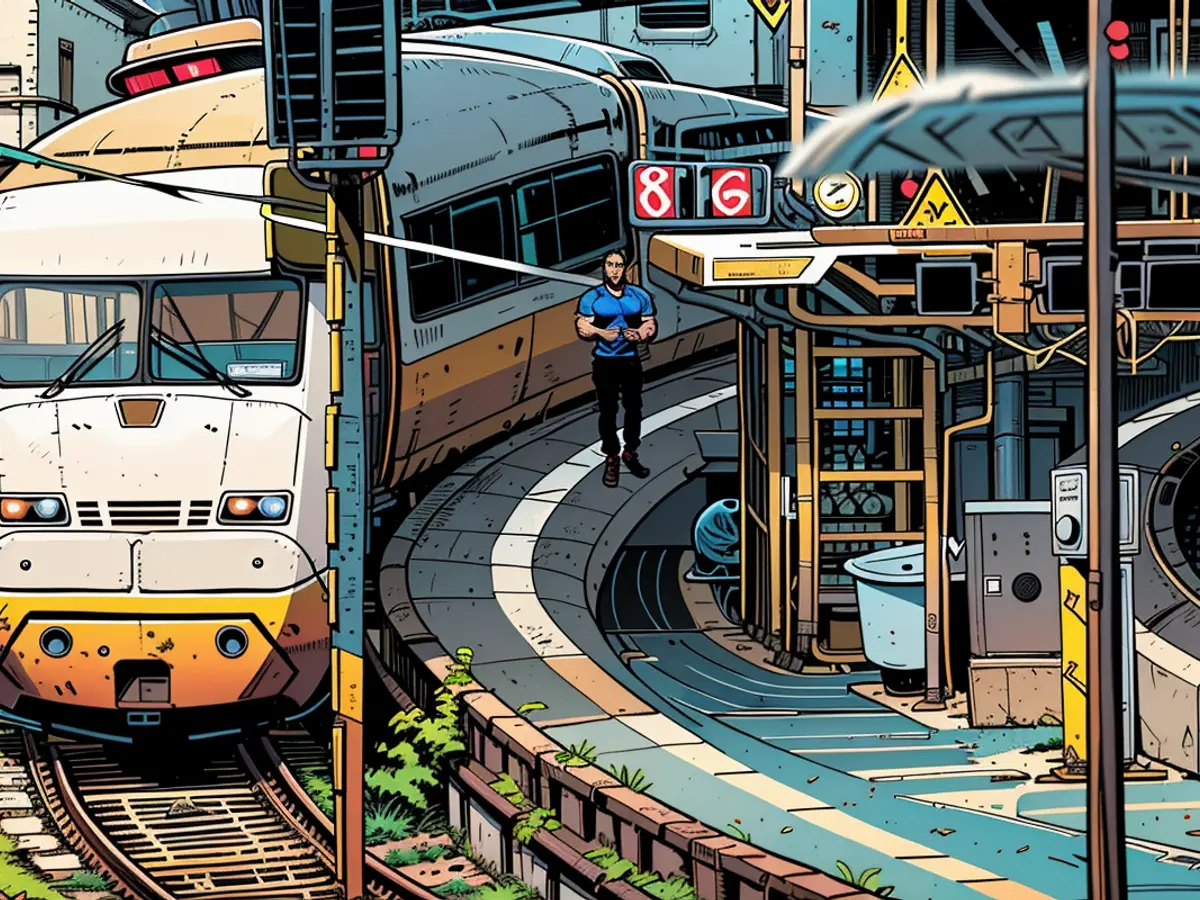Inflation, jobs and labor: The economy a new Democratic nominee will face
Biden’s statement, posted on X Sunday afternoon, touted his administration’s economic policies. “Today, America has the strongest economy in the world,” he wrote, adding that “we overcame ... the worst economic crisis since the Great Depression.”
While the economic outlook appears somewhat more promising than the one Biden inherited in 2021, the economy is still a mixed bag, and the new Democratic nominee will have to navigate a precarious landscape ahead of the November election.
Jobs remain stable so far this year
The labor market remains reassuringly steady, even as job gains cooled modestly last month. The US economy added 206,000 jobs in June, the Bureau of Labor Statistics reported July 5, a small dip from May’s tally of 215,000 jobs.
The economy remains historically strong. June marked the economy’s 42nd consecutive month of job growth, the fifth-longest employment expansion on record.
The unemployment rate moved slightly higher, up 0.1 percentage points to 4.1%. That marked the first time since November 2021 that the jobless rate was above 4% and also the third consecutive month that the unemployment rate increased.
Job opportunities, while still above pre-pandemic levels, have shrunk, and Americans have remained unemployed for longer. The median duration of unemployment jumped higher — to 9.8 weeks from 8.9 weeks — and landed at a level not seen since January 2023, BLS data showed.
While economists aren’t too concerned about the current unemployment rate, subsequent increases as we get closer to the election could raise some concern.
Interest rates remain elevated
The June jobs report also indicated that wage growth is cooling, with average hourly earnings rising 0.3% for the month and slowing to a gain of 3.9% on an annual basis, its lowest rate in three years.
Slowing wages could help set the stage for the Federal Reserve to begin cutting interest rates — if they also end up translating into slower inflation. Strong wage growth can put upward pressure on prices, but Fed officials have said they focus primarily on inflation gauges to know if price hikes are under control or not.
The Fed kicked off an aggressive rate-hike campaign in March 2022 in a bid to fend off a looming recession amid a post-pandemic inflation surge. But even though the coveted “soft landing” seems increasingly likely, in which a central bank brings inflation into line without triggering a recession or mass unemployment, the Fed has been hesitant to cut interest rates.
Following a meeting in June, the central bank announced it was keeping its benchmark lending rate at its current level for the seventh time in a row, maintaining a 23-year high that has been the norm since last August.
The historically high rates have put enormous strain on Americans’ cost of living as they influence everything from mortgage rates to car loans. Although average rates for the standard 30-year fixed-rate mortgage have fallen this year, they still remain well above 6%. Borrowing costs are poised to ease by the end of the year, but it may not be by much.
Inflation is tentatively improving
Along with interest rates, inflation has also been a top financial concern for Americans throughout Biden’s term, as pandemic-era pressures on global supply chains and price gouging by retailers have pushed prices higher and higher since 2021.
Inflation rates are nowhere near the pandemic-era peak reached in June 2022, when US inflation hit 9.1%, its highest annual rate in more than 40 years. As of last month, annual inflation was 3%, down from 3.3% in May, according to the Consumer Price Index.
Falling gas prices as well as a drop in new and used car prices helped to usher in the first month-on-month decline since May 2020, BLS data showed. On an annual basis, consumer prices are increasing at their slowest pace since June 2023, matching the lowest annual rate since early 2021.
Despite the improvement, it may take time for these data points to have a palpable effect on consumer wallets, as life expenses remains overwhelmingly expensive for many who have been worn down by consistently high prices for the past three years.
The Fed will also likely want to see a more consistent pattern of cooling inflation and clearer signs that inflation is trending towards the bank’s 2% goal before it eases interest rates.
Domestic manufacturing jobs
A flagship of the Biden administration, the bipartisan CHIPS and Science Act was passed in July 2022 to help companies bring chip manufacturing back to the United States and, as a result, help lower costs and prevent supply chain disruptions.
Once a leader in semiconductor chip manufacturing, the United States has lost ground as countries like China ramped up production, forcing many American manufacturers to import chips — essential to the production of cars, smartphones and medical equipment.
Since enacting the bill, the administration has poured billions into research and development and manufacturing in facilities across states including Arizona, Colorado, New Mexico, Oregon and Texas.
“Companies have announced over $825 billion in investments in manufacturing and clean energy in the United States since the President took office, including in semiconductors,” the White House announced in April.
The new Democratic nominee could lean into the CHIPS and Science Act as a hallmark of the party’s commitment to increasing domestic jobs. But the legislation comes as some manufacturing jobs have also been cut due to outsourcing.
Manufacturing jobs across the country have plateaued at 13 million employees after recovering from a sharp pandemic-related downswing in 2020, according to data from the Bureau of Labor Statistics. Specifically, machinery manufacturing, which includes jobs that produce agriculture and construction equipment, has seen a decline of about 9,000 employees since the beginning of the year.
CNN’s Alicia Wallace, Bryan Mena and Katie Lobosco contributed to this report.
The new Democratic nominee will need to address both the growth and stability of business-related sectors in the economy, given the precarious landscape ahead of the November election. While the US economy added jobs in June, job opportunities have shrunk, and Americans have remained unemployed for longer, with the median duration of unemployment increasing.
Furthermore, even though interest rates remain elevated, they could potentially decrease if wage growth slows and translates into slower inflation, as the Federal Reserve focuses primarily on inflation gauges to ensure price hikes are under control.








